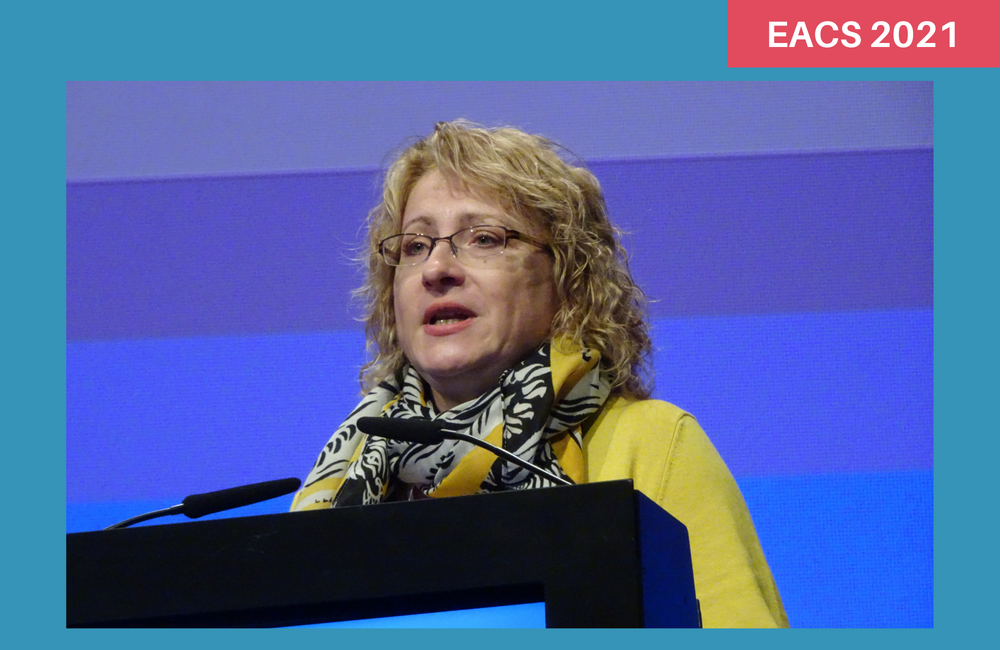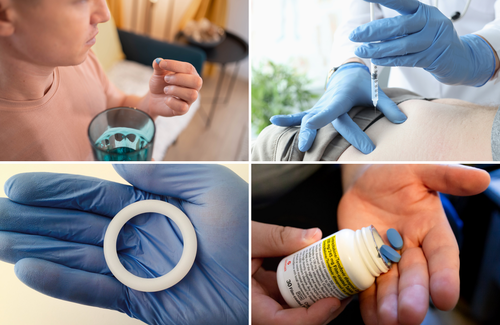
No one is in any doubt as to the efficacy of HIV pre-exposure prophylaxis, at least for gay men, the 18th European AIDS Conference (EACS 2021) was told last week.
However, the conference heard, we need better tools to monitor its long-term use by individuals and whether they are using it optimally. And PrEP is still nowhere nearly available enough in the parts of Europe that need it most.
PrEP in eastern Europe: still too little on offer
Eastern Europe and central Asia is the only global region where HIV infections have risen significantly in the last decade, and the only one where HIV-related deaths have also increased, Dr Justyna Kowalska of Poland’s Medical University of Warsaw told the conference.
Yet even the country providing PrEP to more people than any other in the region – Ukraine, with just under 4000 people starting PrEP since 2018 – would be supplying PrEP to 62,500 people, if the size of its PrEP programme relative to its population of people living with HIV was the same as that in France or the UK.
A bigger PrEP scale-up in Ukraine was not impossible, said Kowalska, given that the number of people with HIV on antiretroviral therapy there had increased tenfold from 10,600 in 2008 to 122,700 in 2018.
Yet Ukraine (and Poland, with a similar number of PrEP initiations) were hailed as PrEP pioneers compared with other countries in the region. There are small PrEP programmes in some central European countries such as Slovenia, Croatia and Czechia, and also in Georgia and Moldova. There are tiny pilot programmes offering PrEP to only handfuls of people in Kyrgyzstan, Armenia and Russia (though there appears to be considerable informal use in Russia). In six countries in the region there are no plans as yet to even licence PrEP.
In 2018 Kowalska and colleagues conducted an online survey of healthcare workers in central and eastern Europe. Seventy-six practitioners replied, from 23 countries. Of note, though 81% said that they had patients who would be eligible for PrEP because they were gay or bisexual men who had unprotected casual sex, 43% also said that they had patients whose injecting drug use would make them eligible.
While some did cite factors such as stigma and political opposition to PrEP as causes for it not being available, the overwhelming reasons given were institutional. For example, because national healthcare plans did not pay for it (69%), because it was not formally licensed so if doctors did prescribe it, it would be 'off-label' and the doctor would be liable for any adverse consequences (46%), and because national guidelines did not include it (35%).
There was a big difference between PrEP being licensed – i.e. allowing doctors to prescribe it – and it being recommended. Between March 2017 and October 2018, the proportion of countries in the region that licensed PrEP doubled, from 34% to 66% – but the number that recommended PrEP did not increase at all.
There are 53 clinics offering PrEP in the region, but the majority are in Poland, Romania and Ukraine. On the patient side, another survey in Poland asked sexual health clinic attendees whether they would take PrEP or already did: 69% said they would be interested and 5% said they already did.
One really interesting insight offered by Justyna Kowalska is that high levels of interest in PrEP are partly due to PrEP being ‘the tail that has wagged the dog’ in terms of setting up a network of community-friendly sexual health clinics in Poland and Ukraine, and that this pattern might come to be replicated in other countries. PrEP provision demanded a level of engagement with patients that old models of STI and HIV treatment did not. While one reason for PrEP’s slow introduction in eastern Europe was due to a lack of a model of how to provide it, once services sprang up, they also became the place where gay men and others went to have their sexual health needs met anyway.
Confirmation that on-demand PrEP works as well as daily
Also at the symposium, Dr Jade Ghosn of Hôpital Bichat - Claude Bernard in Paris reminded the audience of PrEP’s huge efficacy in a population that took it when it was needed – and that it may not be needed every day.
He reviewed a study originally presented at CROI in February 2021 that found just six HIV infections among 3059 gay men using PrEP in the Paris-based PREVENIR implementation study. The study has no control arm, but if the overall annual HIV incidence in participants (0.11%) is compared with annual incidence in the placebo arm of the IPERGAY study that preceded it (6.6%), it implies that PrEP was 98.3% effective in PREVENIR, stopping 361 HIV infections that might otherwise have occurred. Furthermore, all infections occurred in people who had had risky sex well after they had stopped using PrEP, with the shortest gap between stopping PrEP and becoming infected being seven weeks.
In addition, perhaps the most important aspect of the PREVENIR results was that its participants split 50/50 between men who took PrEP daily and men who opted to take it on-demand, on the ‘2-1-1’ pattern – and that the six infections were also evenly split, with three each in daily and on-demand users.
Having established that on-demand and daily PrEP work just as well as each other and that infections almost always happen during a period of no PrEP, the important thing is to establish why people stop taking it.
Making sense of the ‘PrEP cascade’
Robert Hejzák of the Czech AIDS Help Association told the conference that we need better tools to monitor individuals’ long-term use of PrEP. Without these, we cannot properly gauge its public-health effectiveness in reducing the spread of HIV and thereby persuade policy makers to make it more widely and easily available.
Long-term PrEP use continues to be an area of ignorance. Almost no countries apart from the US have had significant PrEP provision for more than five years. Even there, although PrEP initiations are well documented, PrEP discontinuation – and whether most discontinuations are long lasting or are temporary pauses, hopefully during a period of low risk, is very much under-researched. This is partly because people often simply don’t come back for another prescription, so are not asked why they stopped.
In the largest US study of PrEP discontinuations to date, 52% of people who started PrEP between 2012 and 2019 stopped it at least once – but 60% of those also later resumed it at least once. The highest rate of discontinuation was in the first two years, suggesting that for those who stay with it longer, PrEP use becomes more habitual.
However, we don’t know most people’s reasons for stopping or restarting. Hejzák said that although some studies have found that gay men do match their PrEP use to their degree of risk, this could not be assumed. He was reminded that people may underestimate their HIV risk by a service user who explained that he had stopped taking PrEP “because I have cut down from ten partners a month to two”. Logistical barriers such as lapsed health insurance might be an issue for other PrEP users.
A number of steps needed to happen before widespread uptake of PrEP is even feasible, Hejzák said. Proper surveillance was needed to estimate the number at risk; individuals who are at risk needed to be aware of their vulnerability to HIV; they needed to know about PrEP; PrEP needed to be accessible in some way; there needed to be proper assessment and prescribing procedures. Only then could PrEP be initiated, adherence supported, and appropriate retention monitored.
One barrier to awareness and uptake, Hejzák argued, was that PrEP was still far too often assessed and dispensed in medical settings, by medical personal. One global study had found that of 33 PrEP service delivery models, 19 were solely or largely delivered at specialist sexual health or HIV clinics and as regards personnel, 29 were solely or partly delivered by specialist physicians or nurses.
The exceptions included models which involved primary care physicians, pharmacists, community health volunteers/peers and patient navigators/mentors. Eight were delivered at community health centres, four in PrEP users’ homes, and in one case by patient navigators at a pharmacy. Many of these were minority elements of programmes where the majority of PrEP was delivered in clinics and/or by clinicians, though Hejzák said it was encouraging that ten schemes were nurse-delivered.
Nine schemes, including three of the four delivered at home, also included an element of telehealth such as online assessment, self-testing or sampling, and PrEP by post or courier. But Hejzák said he had hoped that the COVID epidemic might have given rise to a wider variety of community-delivered schemes such as one he cited in Ukraine where PrEP was delivered by taxi to people making online requests.
PrEP needed to be redefined, not as a medicine, like antiretroviral therapy, but as a behaviour, like condoms, he said. This also implied using a wider range of criteria to define whether PrEP ‘worked’ or not. As the data shows, for instance, that PrEP confers benefits in terms of reducing anxiety and depression, then mental health outcomes, as measured by validated tools, needed to be included among measures of effectiveness.
Kowalska J. PrEP scale-up in Europe. 18th European AIDS Conference, London, Updates in PrEP implementation and regimens parallel session C2, 2021.
Ghosn J. New PrEP regimens for the future. 18th European AIDS Conference, London, Updates in PrEP implementation and regimens parallel session C2, 2021.
Hejzák R. Long-term PrEP: Perspective from the community. 18th European AIDS Conference, London, Updates in PrEP implementation and regimens parallel session C2, 2021.

